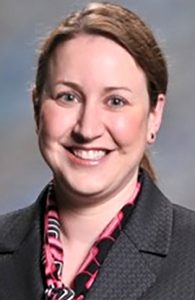
By Susan Elise Campbell
The fourth quarter of any fiscal year is a busy time for CPAs. But this year, advising clients is posing more than the usual challenges.
“It is difficult enough for CPAs to get out of 2020, much less plan for 2021, when passing laws pertaining to deductions, depreciation and taxes is delayed,” said Laurie A. Stillwell, a CPA in Saratoga Springs.
“My biggest fear professionally is that it is difficult to advise clients on how to move forward from a business and personal tax perspective,” she said. “I have never been busier, but I want to be proactive and that is nearly impossible.”
“It has been the busiest year-end in 10 years because of uncertainty with taxes and the economy,” said Paul A. Curtis, CPA, a founding partner of CMJ, LLP in Queensbury. “Our firm was in a rush to close business sales because the new administration is thinking of eliminating the maximum 20 percent capital gains rate and raising personal income tax rates.”
“A company that has grown to a million dollar business pays $200,000 under the current tax code but may have a $400,000 tax bill if they wait to cash in next year,” he said, which is why CMJ closed six major transactions in December. Uncertainty scares businesses to death.”
One issue that was clarified when the CARES Act and supplemental appropriations were signed on Dec. 27 is what would happen if small businesses were unable to repay their loans under the Payroll Protection Program.
Many businesses in Stillwell’s practice have taken out PPP loans since they became available under the stimulus and relief package enacted last March, she said. The loans had to be used to pay salaries, insurance, overhead and other specific expenses to help qualifying businesses retain staff and stay afloat.
“The Treasury Department said in the original legislation carried forward that if the borrower defaults and meets criteria for the PPP loan to be forgiven, the small business does not have to pay tax on the cancelled debt,” she said.
Stillwell cited some of the PPP guidelines. The goal of the loan is to retain workforce and keep the business viable. If staff drops too much, the Small Business

Administration, which is “the rulemaker on this program,” may not forgive the entire balance due.
“There are a fair number of exceptions, exclusions, client protections and safe harbors built into the regulations,” she said. “These try to provide targeted relief for companies, although sometimes it is just not feasible to keep a business open.”
As an even bigger concession for struggling businesses, the new law makes actual expenses paid with PPP loan proceeds deductible.
“There has never been anything like a 100 percent tax-free loan,” said Curtis. “This has a major impact on all businesses, no matter what size.”
On a loan of $100,000, for example, the savings to a business could be $10,000 or more, Stillwell said.
There is an extensive list of tax credits and deductions businesses rely on that the CARES Act carried into 2021.
“These are habitually extended a year at a time, which is a band-aid approach,” said Stillwell.
“One extension we were looking for is the provision in the original CARES Act that allows employers to defer some of this year’s payroll tax, which is their portion of Social Security and Medicare, into 2022,” she said. “Depending on how the company files taxes, this can help provide cash flow for the business.”
The Qualified Business Income Deduction was also extended.
“This is a deduction put in place in the last minutes of 2017 and effective for 2018,” said Curtis. “When the tax on C Corporations was reduced from 39 percent to a flat tax of 21 percent, it was not fair to S Corporations and partnerships, which are subject to ordinary personal income tax rates.”
The QBID is a 20 percent reduction in taxable profit, Curtis said, “which somewhat reduces taxes for individuals with small businesses.”
The fourth quarter is typically busy for CPAs because it is the time when they may be advising clients on re-establishing their business as a Subchapter S Corporation from a C Corporation in order to eliminate double taxation.
“C Corporations pay a flat tax and then dividends to the owners are taxed up to 24 percent,” said Curtis. “Whether to make the transition has much to do with the owner’s exit strategy.”
Curtis said it is “almost impossible to sell corporate stock.” That is because a new owner inherits all of the known, and unknown, assets and liabilities of the company, such as a lawsuit that does not emerge until after the purchase, he said.
“Risk is reduced with an S Corporation because you can pick and choose which assets and liabilities you want,” said Curtis.
To enact the sale of a C Corporation’s assets, the owners have to liquidate and pay a dividend, when double taxation enters the picture. Both the company and its share owners are subject to tax, whereas partners of an S Corporation are subject to only one level of income tax, and personal income tax rates were trimmed greatly by the last administration, Curtis said.
“Changing the filing status to an S Corporation can result in a 19 percent net tax reduction to business owners,” Curtis said. “A C Corporation still makes sense for smaller, high-growth companies but mature companies, with their higher cash flow for payouts, should consider changing how they file.”
Now is the time CPA firms are gearing up for tax season and Curtis said moving last year’s personal income tax filing deadline from April to July greatly helped firms get through their backlogs last season.
“We did a straight-out crunch, with half the staff working three days and the other half another three days, and we were busy with extensions through the fall,” he said. “I suspect the federal government will extend the due date again and hope to hear soon.”
While the upcoming administration has hinted that personal income tax rates may be going back up and the maximum capital gains tax rate may be done away with, the future is cloudy.
“My crystal ball broke back in April,” said Stillwell.
